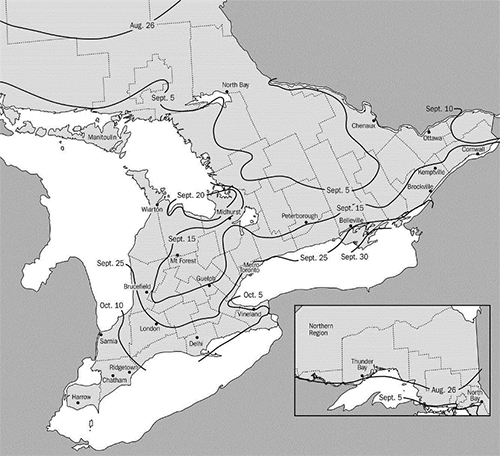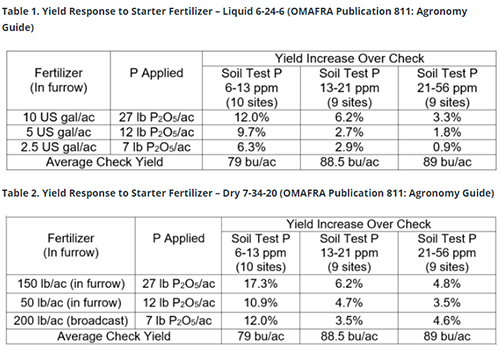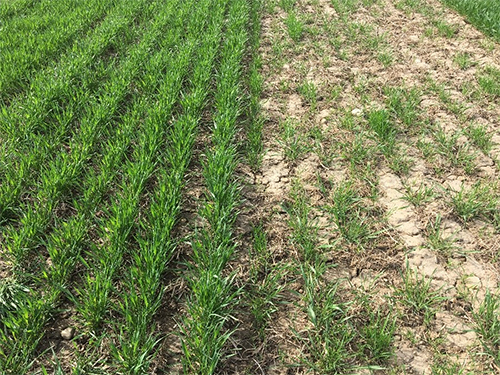The 2018 growing season had its challenges with a cool, wet spring followed by hot, dry weather during the critical grain fill period. The weather had a negative impact on yield for many while others were pleasantly surprised with yields pushing well over 100 bu/ac. So what did growers who fared better than others have in common even in a year with variable moisture? They made sure their winter wheat crop had the best start possible.
You may say to yourself “Yes, we know a good wheat crop starts with planting! We’ve heard this over and over again!” Yet, many are still not giving their winter wheat crop the attention it deserves at planting. This lack of attention to detail in the fall has an impact on how well the crop manages the stressors Mother Nature may throw at it and can ultimately make or break your crop.

Figure 1. Optimum date to seed winter wheat across Ontario. OMAFRA Publications 811: Agronomy Guide
Attention to detail starts with planting your crop on time (Figure 1)! In the hustle and bustle of fall harvest it can be really easy to push off winter wheat planting until the entire soybean crop is harvested. However, Ontario research has shown a 1.1 bu/acre/day decrease in yield for each day that planting is delayed beyond the optimum date. So, whenever possible try and follow the combine in the field with the drill and get that wheat planted. In order to successfully do this, ensure all soybean residue is evenly spread and that the drill can easily cut through the residue. Also double check that all planting equipment is in good working order well before you get to the field to avoid any further delays.
Next, ensure you are using a starter fertilizer. Ontario research has shown over and over again that winter wheat is highly responsive to starter fertilizer, phosphorus in particular. Starter fertilizer provides nutrients for early growth and promotes root development, ultimately improving winter survival and crop uniformity the following spring. Seed-placed starter fertilizer has be shown to increase yields, on average, by 7.5 bushels per acre. Ontario research has also shown that dry granular fertilizers are as effective as liquid 6-24-6 (Table 1 and 2).

Consider the move to fall weed control! Although winter wheat is quite competitive, weed pressure can have an impact on tillering, ultimately reducing yields. Fall weed control enables you to better manage herbicide resistant Canada fleabane and also provides an opportunity to control perennial and winter annual weeds. More importantly it allows for proper fungicide timing in the spring and means one less thing to worry about in the busy planting season.

Figure 2. Winter wheat seeded at 1″ seeding depth (left) vs 1/2″ seeding depth (right)
Lastly, be prepared to adjust! Adjusting your seeding depths and populations will help compensate for the less than ideal conditions that may occur at planting. Seed winter wheat a depth of about 1 inch, any shallower and the crop becomes more vulnerable during the winter months (Figure 2). If the weather turns dry during planting, adjust the seeding depth so that the seed is being placed into moisture. Seeding rates should also be adjusted if seeding is delayed beyond the optimum timing. Rates should be increased by 200,000 seeds/week to a maximum of 2.2 million seeds/acre. Higher seeding rates when planting is delayed will also assist with the reduced tillering that may occur before winter.
The fall can be a busy time with soybean harvest and winter wheat planting occurring simultaneously, but when it comes to winter wheat, time is money. So if we want a profitable wheat crop we need to pay attention to the details in the fall and give it the best chance to survive whatever Mother Nature throws it’s way!
Source : fieldcropnews